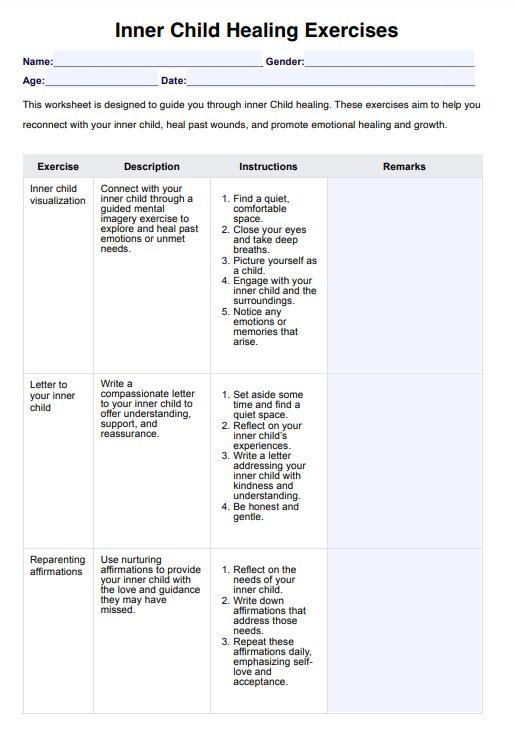Inner child exercises help clients process unresolved childhood trauma, fostering self-compassion and emotional resilience. These exercises encourage self-awareness and healing, improving coping skills.

Inner Child Healing Exercises
Help clients reconnect with their inner child, heal childhood trauma, and find emotional resilience with Inner Child Healing Exercises.
Use Template
Inner Child Healing Exercises Template
Commonly asked questions
Practitioners should assess each client's emotional history to customize exercises. Gentle visualization may suit clients with trauma, while others may benefit from creative expression or affirmations.
Boundaries help clients feel safe during healing. Practitioners can incorporate boundary-setting into exercises, empowering clients to nurture their inner child while maintaining emotional protection.
EHR and practice management software
Get started for free
*No credit card required
Free
$0/usd
Unlimited clients
Telehealth
1GB of storage
Client portal text
Automated billing and online payments











